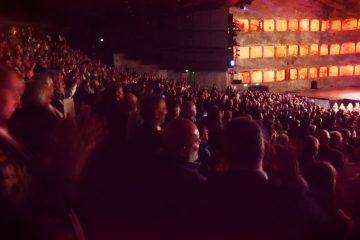by Leanne Ogasawara

One God, One Farinelli…
Stepping onto the stage, the singer draws in a long breath as he gazes out across the audience. For a moment, he is blinded by the light of innumerable candles. So lavishly lit, it is a miracle that the theater didn’t burn down more than it did over the years. Over a hundred boxes rise up in six tiers in front of him; each box with a mirror affixed on the front reflecting the twinkling light of the two candles placed on either side. The singer can just make out the bejeweled king and queen sitting in their royal box with its gigantic gold crown hovering above. This was the Teatro di San Carlo in the Kingdom of Naples, considered during the 18th century to be the greatest opera house in the world. And on this night, people had come from far and wide to hear Farinelli sing— Farinelli, the famed castrati singer, who drew great crowds and commanded princely sums wherever he performed.
But what a price he had paid to stand on this stage.
The deplorable practice of mutilating young boys to preserve their adolescent voices began in Italy as early as the 12th century. But castrati voices are something we associate most closely with 17th-18th century Baroque music. At that time, women were not allowed to sing in church or on stage in the Papal States, and so the practice began of seeing men singing the roles of women. But this was not like in Japan in Kabuki theater, where you still see men exclusively performing the roles of women; for in Italy these were not men dressed up as women –but rather were those who had undergone castration as children. The church alone cannot explain the huge popularity of their voices throughout Europe. In Naples or London, for example, women had never been banned from appearing on stage, and yet castrati regularly appeared alongside female sopranos.And they were wildly popular. Rock stars, is how we would describe them today. Read more »
